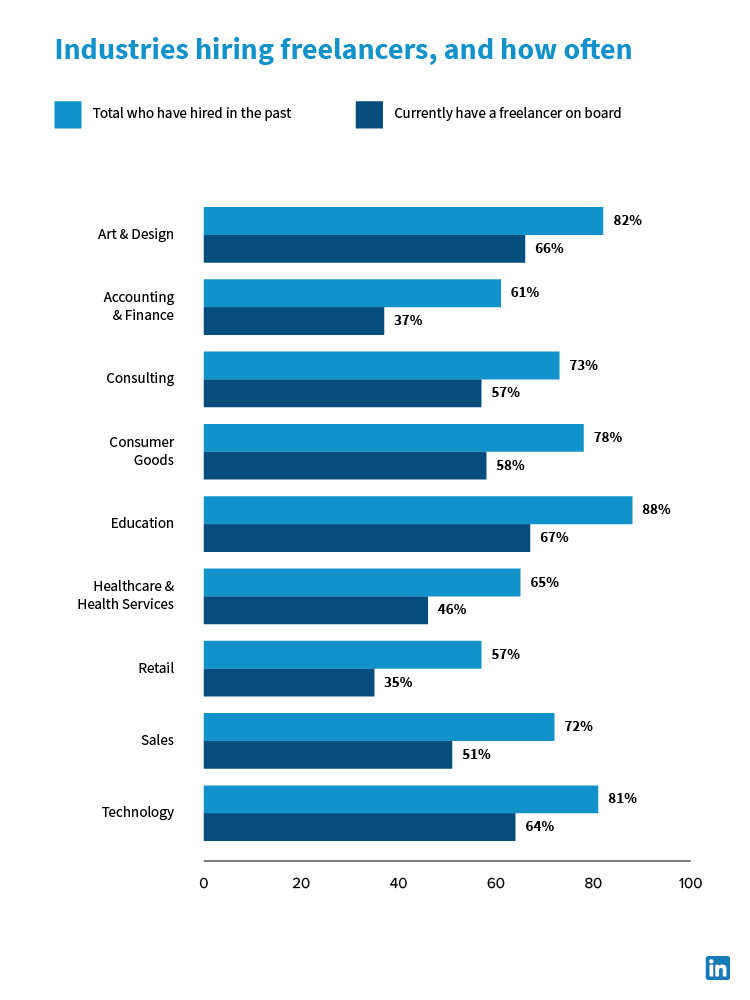Key Takeaways
1. The number of gig workers has increased substantially over the last few years.
2. Technological advancements play a pivotal role in this rise.
3. Gig work offers flexibility and freedom for individuals.
4. Firms are given the opportunity to cut costs and grow more easily.
5. Gig workers face numerous challenges including a lack of stability in their work.
A gig is a temporary flexible job. The more formal definition of the gig economy is a labour market characterised by short-term, freelance, or temporary work engagements, often facilitated through digital platforms or applications, where individuals, known as gig workers, perform tasks, projects, or services on a flexible basis for various employers.
Denae Bettis, a 23-year-old living in Severn, Md. dropped out of college and got a job at UPS, rising to become a safety supervisor, usually starting at 4 a.m. “The job got really stressful, and I felt like I had no way out,” Ms. Bettis said. In June 2020, she started a side hustle through Instacart, shopping for people confined to their homes due to the pandemic. In the following month, she quit her job to work as a personal makeup artist, joining the gig economy. “Everybody loves stability, but if the flexibility isn’t there, I don’t think a lot of people are going to go back.” Ms Bettis claims, mirroring the views of many other gig workers.
A study done by BCG on the gig economy in India centred its attention on exploring the gig economy’s prospects in non-farm sectors. The study identified about 70 million potential ‘gigable’ jobs in sectors like construction, manufacturing, retail, and transportation, with most opportunities concentrated in unskilled roles. Household demand for gig-based roles showed diversity in service types, estimating a need for nearly 12 million workers predominantly for services like childcare, and regular services like maids. The study projected that the gig economy had the potential to encompass up to 90 million jobs, with the majority stemming from non-farm sectors and household demand.
(Source: https://media-publications.bcg.com/India-Gig-Economy-Report.pdf)
The volume of gig economy workers have increased substantially in the last few years. According to McKinsey’s 2022 American Opportunity Survey, 36 percent of employed participants—equivalent to around 58 million Americans—classify themselves as independent workers. This marks a notable rise from 2016, when McKinsey’s research suggested that 27 percent of the workforce operated independently.
There are 3 main reasons for this rise. First technology has developed and working remotely has become commonplace. This has made linking individuals to growing opportunities easy and makes collaborating with freelancers as effortless as working alongside a colleague from home or a different company site. Many people who were laid off during the pandemic turned to freelancing, either because they needed new income sources or because they desired greater independence and flexibility.
Second, many workers want more control over their time and many others want to follow their passion. According to Gallup, an American analytics and advisory company, 64% of gig workers report that they’re doing their preferred type of work and 79% of full-time independent workers say they’re happier working on their own than at a traditional job. Furthermore, in a survey conducted by Upwork, an American freelancing platform, it was found that 84% of freelancers are living their preferred lifestyle compared to 54% of employees working in traditional jobs.
Third, firms, specifically smaller startups are advantaged. According to a survey done by Linkedin, firms in nearly every industry have seen a surge in the freelancers they hire for temporary work.

At certain points, companies might require specialised assistance, such as a marketing expert for a product launch, yet might not have the budget for a full-time employee. The easy accessibility of freelance talent reduces costs and makes it easier for businesses to grow.
Gig work has its downsides too. Sandeep is a 36-year-old native resident of a small town in Unnao, Uttar Pradesh. He worked as a security guard and helper at a grocery store, before joining Zomato as a food delivery executive. However, Sandeep has concerns. “People like me are easily available and can be replaced at any point.” he says, “I now work 12 hours a day to save for rainy days, I don’t know when my current employer may end up removing me.”
According to Brodmin, a finance company in the United Kingdom, 54% of gig workers don’t have access to employer benefits and McKinsey’s 2022 American Opportunity Survey observed a majority of independent workers—54 percent—report being concerned with the stability of their employment, compared with 35 percent of permanent workers.
Furthermore many lack access to basic necessities, such as affordable healthcare, nutritious food and convenient housing. Half of permanent workers receive health insurance from their employers or unions, while only 32 percent of independent workers can say the same.
While gig work offers freedom, many face challenges like lacking benefits and stability. Deloitte predicts that by 2027, the “alternative workforce” of gig workers is expected to become the majority of the US workforce. Laws should be formulated and implemented to safeguard and uphold the rights of gig workers in various sectors, ensuring their social security, fair treatment, and access to essential benefits.
To stay competitive in the evolving job market, organisations must prioritise accommodating the flexibility expectations of top performers and digital innovators by investing in technology, adaptive policies, and work environments that cater to both on-site and remote workers’ needs.
Shivi Vikram – AS Level – CS International.
Cover Illustration – Shri Sanjith – Grade 10, CS Academy.


